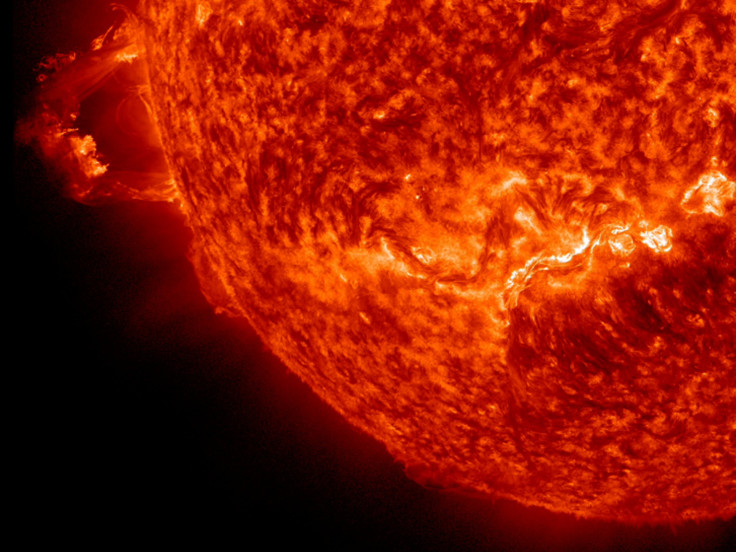Massive Sun Eruption Rings In The New Year [VIDEO]

While many eyes were turned to the giant ball in New York's Times Square as the countdown clock hit zero and 2012 became 2013, the Sun was putting on its own New Year’s Eve celebration -- and NASA captured the stunning eruption on video.
The solar eruption lasted for about four hours, according to NASA. On Dec. 31, it began at 10:20 a.m. and ended at 2:20 p.m. EST. The explosion of plasma can be shooting up from the Sun’s surface in a spiral before collapsing back to the surface. The footage was captured by NASA’s Solar Dynamics Observatory.
Space.com noted that the solar eruption, while spectacular, was not all that powerful, as NASA reported that the plasma flumes were unable to escape the Sun’s gravitational pull.
Still, the Sun’s eruption was pretty stunning when you compare its size with the Earth's size. The eruption measured 160,000 miles from the top to the bottom at the Sun’s surface, according to NASA, which called the eruption “relatively minor.” Nonetheless, its height means it would have towered over 20 Earths stacked atop each other and over two Jupiters stacked the same way.
Besides looking impressive, solar eruptions and flares can affect Earth in many ways. A much larger solar flare could have an effect on satellite communications, and it could harm astronauts currently in space, according to Space.com. A solar storm can also cause a geomagnetic storm that could impact communication systems and power grids on Earth. A geomagnetic storm not only can intensify aurorae, such as the Northern Lights, but also create aurorae in unusual places, like Texas in 1989, as reported by New Scientist.
Video of the New Year's Eve eruption of the Sun can be viewed here.
© Copyright IBTimes 2024. All rights reserved.












